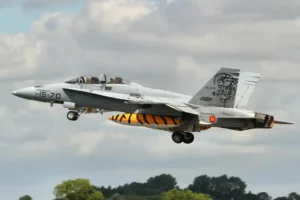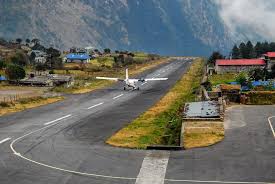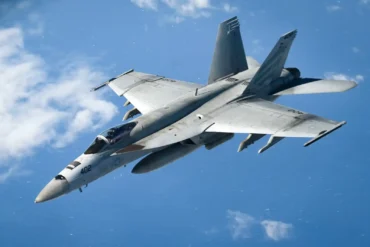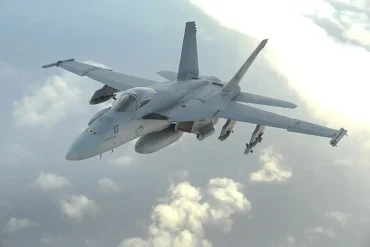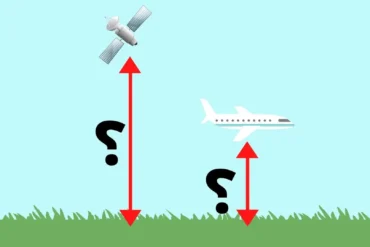The F/A-18 Hornet, a versatile multirole fighter jet used by various air forces and navies around the world, is known for its impressive performance in both air-to-air and air-to-ground missions. While its design is geared toward combat and tactical maneuvers, there have been instances where the aircraft’s maximum performance limits were tested, including pushing its altitude capabilities. This article delves into the altitude record for the F/A-18 Hornet, examining its service ceiling, instances where the aircraft exceeded this limit, and the challenges involved in flying at extreme altitudes.
Understanding the F/A-18 Hornet’s Design and Performance
Key Features and Capabilities
The F/A-18 Hornet was designed by McDonnell Douglas (now part of Boeing) for the United States Navy. It was created to be a highly capable fighter with exceptional flexibility in combat situations. The aircraft’s General Electric F404 engines provide it with the thrust necessary to carry out a variety of roles, including air superiority, ground attack, and reconnaissance.
When considering the altitude performance of the Hornet, it’s essential to understand its basic design specifications. The aircraft’s service ceiling, or the maximum altitude at which it can operate effectively, is listed at 50,000 feet. This altitude represents the point at which the aircraft can no longer climb at a sufficient rate, and the air density is too low to maintain proper engine performance.
Why Service Ceiling Matters
Service ceilings are not arbitrary; they are determined based on the aircraft’s performance characteristics, including engine thrust, aerodynamics, and the physiological limits of the pilot. At higher altitudes, the air density decreases significantly, which impacts lift, engine performance, and overall maneuverability. Consequently, the F/A-18 Hornet can maintain stable flight at altitudes up to 50,000 feet, but performance diminishes beyond this point. For practical combat operations, this altitude is more than sufficient.
Can the F/A-18 Hornet Surpass 50,000 Feet?
Theoretical Maximum Altitudes
While the F/A-18 Hornet is rated for a service ceiling of 50,000 feet, there have been reports of it exceeding this limit in testing or extreme flight scenarios. Theoretical maximum altitude, which often refers to the absolute highest the aircraft can reach before it loses all lift, is generally well above its rated service ceiling. However, it’s important to note that reaching altitudes above 50,000 feet is not practical for routine flight operations.
The service ceiling of 50,000 feet was chosen because beyond this altitude, several factors come into play that significantly reduces the aircraft’s combat effectiveness. For example, beyond this altitude, the engine’s ability to maintain high performance diminishes rapidly. In addition, the Hornet’s aerodynamics—optimized for lower altitudes—become much less effective, limiting maneuverability.
Testing and Flight Records
In some exceptional circumstances, particularly during flight tests or special missions, the Hornet has been known to exceed its rated service ceiling. One such instance occurred during a flight test at Zaragoza Air Base in Spain in 1998. According to pilot reports, after undergoing heavy maintenance, the EF-18/B, a Spanish variant of the Hornet, was taken for a parabolic flight to test the General Electric F404 engine in a clean configuration. During this test, the aircraft climbed to an impressive 63,000 feet, well above its typical service ceiling.
This flight demonstrated the Hornet’s ability to exceed its rated altitude under specific conditions. However, even in this case, the pilots noted that flying above 45,000 feet became increasingly difficult due to the thinning air, which significantly reduced the aircraft’s ability to climb. The crew had to engage the autopilot for the latter portion of the climb, as it was easier for the automated system to handle the reduced air density at such high altitudes.
Limitations at High Altitudes
While the F/A-18 Hornet can technically reach altitudes above 50,000 feet, there are several factors that make such flights impractical. As mentioned, air density at these extreme altitudes is too low to maintain optimal engine performance, which means that the aircraft’s climb rate and speed would be severely limited. This is especially true for combat maneuvers, where the Hornet would be required to maintain a high level of agility and thrust.
At altitudes beyond 50,000 feet, Basic Flight Maneuvering (BFM) and Air Combat Maneuvering (ACM) become less effective. The reduced air density makes turns and high-speed maneuvers less responsive, and the aircraft would struggle to achieve the necessary speeds for combat. Additionally, the performance of weapons systems, such as air-to-air and air-to-ground missiles, is also hindered at such altitudes.
Pilot and Life Support Considerations
One of the most significant practical barriers to flying the Hornet above its rated service ceiling is the pilot’s life support. The aircraft was not designed to operate at such high altitudes, where the air pressure is so low that without a pressurized suit or specialized life support equipment, the pilot would be at serious risk. At altitudes above 50,000 feet, the likelihood of hypoxia and other altitude-related health issues increases, making such flights inherently dangerous.
The F/A-18 Hornet’s cockpit is not equipped with the necessary systems to support a pilot at altitudes above its service ceiling. There is no space for a full pressure suit, nor the infrastructure to maintain adequate oxygen levels for the pilot. Although the aircraft does have pressurized cabins, the lack of a pressure suit means that, in the event of depressurization, the pilot would be in immediate danger. This is another reason why such high-altitude flights are impractical from a combat standpoint.
Real-World Applications of High Altitude Flight
Testing and Experimental Missions
While the F/A-18 Hornet is primarily designed for combat scenarios, instances where the aircraft has exceeded its rated service ceiling are typically limited to testing and experimental missions. During these tests, the goal is not to achieve maximum altitude for the sake of altitude itself, but to push the aircraft’s limits in order to assess its performance characteristics at extreme heights. These tests are conducted under controlled conditions, with the aircraft in a clean configuration and no additional load, which reduces the aircraft’s weight and allows for a higher climb rate.
For instance, during the aforementioned flight test in Zaragoza, the aircraft was in a clean configuration, meaning it did not carry any weapons or fuel tanks. This configuration allowed for a higher climb rate and less drag, making it easier for the aircraft to reach higher altitudes than it would during normal combat operations.
Why High Altitudes Are Not Practical for Combat
Despite the ability to achieve high altitudes in test conditions, the F/A-18 Hornet is not designed for operations above its service ceiling of 50,000 feet. In combat, maintaining an effective battlefield presence and mission readiness at such extreme altitudes would be far too difficult. The limitations in performance, combined with the life support issues and the general lack of practicality at such heights, make it clear that the F/A-18 Hornet is best suited for operations at or below its rated service ceiling.
Conclusion: The F/A-18 Hornet’s Performance at High Altitudes
While the F/A-18 Hornet is capable of reaching altitudes above its rated service ceiling of 50,000 feet, doing so is highly impractical for combat operations. The aircraft’s performance decreases significantly at higher altitudes, and the challenges associated with both the aircraft’s capabilities and the pilot’s life support make flying above these altitudes unsustainable in real-world scenarios.
Instances where the aircraft exceeded its service ceiling, such as the flight test at Zaragoza Air Base, demonstrate that the Hornet can technically reach altitudes of up to 63,000 feet. However, this is a rare exception, and such altitudes are typically only achieved in controlled flight testing environments. For combat pilots, flying above 50,000 feet is neither practical nor necessary, and the aircraft’s design reflects its optimal performance at lower altitudes.
